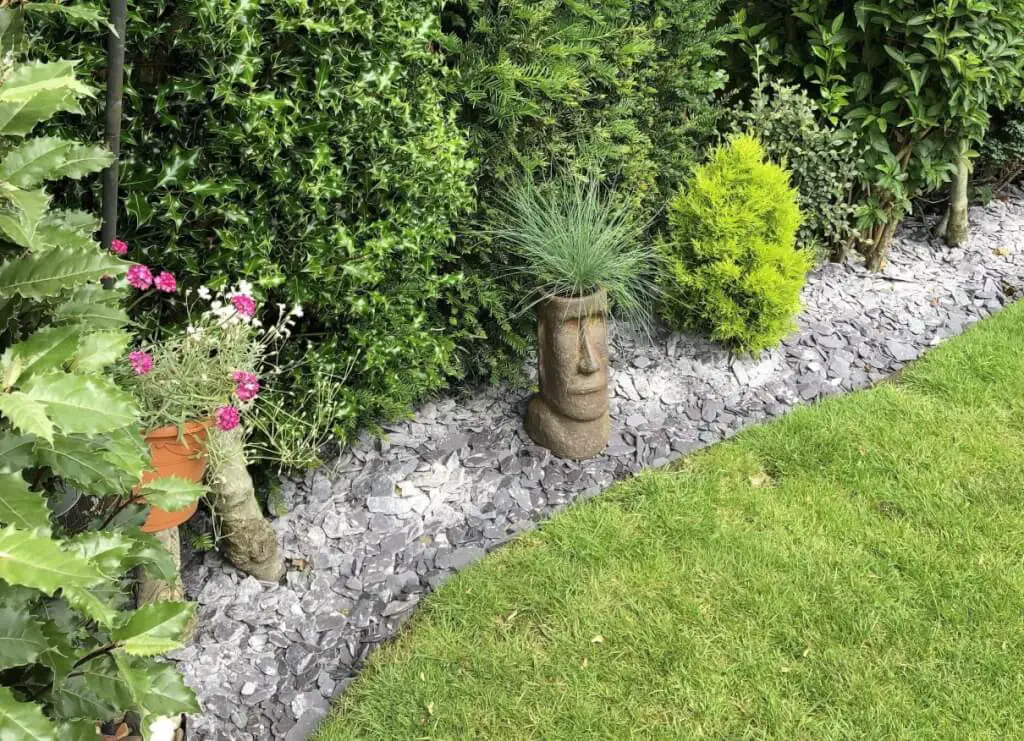Using low-maintenance plants as garden borders has become the in-thing for landscapers looking for a natural and unique landscape design. Gone are the days when plastic, stone, and metal used to be all the rage for landscapers.
For an inch-perfect outdoor space, every aspect of your landscaping should blend in harmony. The edging you choose for your garden borders is one aspect you can’t leave to chance.
Let’s look at an interesting array of low-maintenance border garden designs to make your garden look like a million dollars.
1. Embrace a Repertoire of Plants to Create Contrast
Harmony is essential when using plants to create a border for your small garden, but so is diversity. It makes sense to use garden plants that bring out a harmonious appearance.
However, you can be more adventurous and creative by choosing plants with different colors and spectacular shapes, such as pencil point junipers and spiky palms.
The trick is to strike a delicate balance between harmony and variety.

2. Fill Your Garden Borders With Scented Plants
Beautiful plants give your garden a magnificent look. Now, imagine adding scent-filled plants to the mix? Scintillating, isn’t it? You can have the best of both worlds in one package – the best garden and heavenly scents.
There is a wide array of scented plants to choose from. Plants like white jasmine and Dutch honeysuckle will permeate the outdoors with their perfume.
Other plants guaranteed to infuse your entire garden with incredible smells include witch hazel, roses, thyme, Daphne, among others.
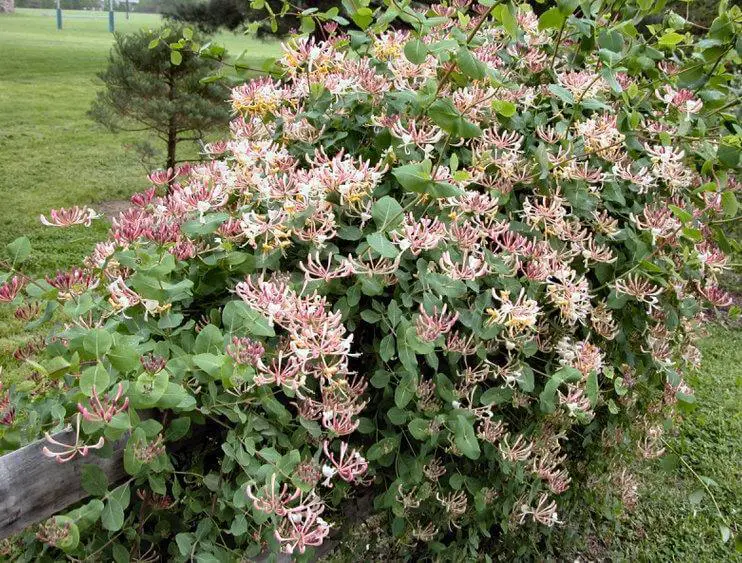
3. Factor In the Color Wheel in Garden Borders
Color is an individual preference when choosing incredible plant garden border ideas. To make a loud outdoor living style statement like pro landscapers, a classic combination while factoring in the color wheel, is the way to go.
Opposite colors on the color wheel complement each other via dramatic contrast. On the other hand, colors adjacent to each other are harmonious and effortlessly combine over a large garden.
Opt for tones, tints, and shades of a single color to achieve a cutting-edge monochromatic appearance. You can also settle for a mind-blowing fusion of three colors from the color wheel, spaced apart at an equal distance.
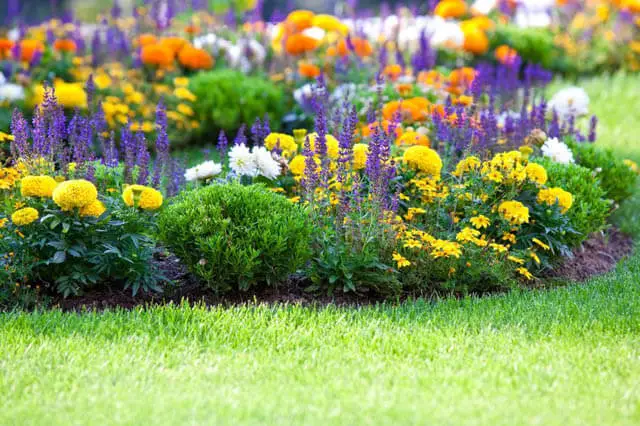
4. Introduce Layers for Extra Interest
One of the simplest and incredibly visually stimulating ways of creating a low-maintenance landscaping masterpiece is planting in layers.
The first (front) layer can have short shrubs, ground-cover plants, and mounding perennials. The middle layer should include ornamental grasses, roses, mid-sized shrubs, and perennial plants. The farthest layer can have trees, tall shrubs, bamboo, and lofty grasses.
Nevertheless, don’t arrange the whole setup like a sequence of steps. Occasionally, sweep low plants towards the further edge and taller plants towards the front to achieve depth and allure.
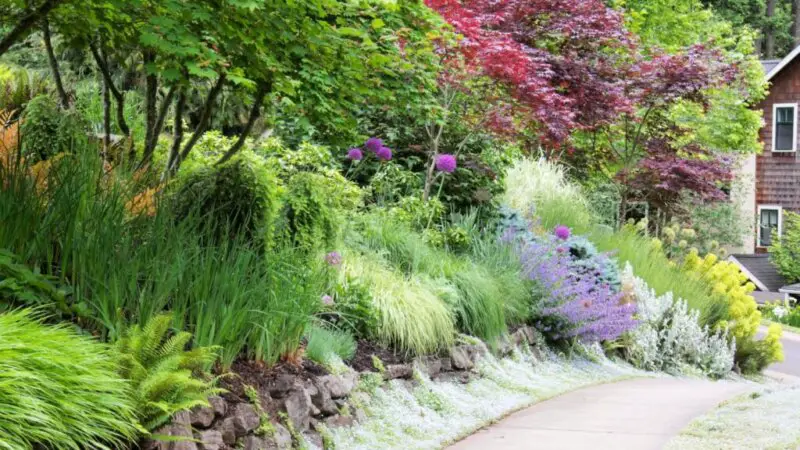
5. Choose Plants With Winter and Autumn in Mind
While choosing native plants for your low-maintenance garden border, keep the seasons in mind. Whether it’s late summer or late winter, plants boasting of fiery autumn leaves, colorful fruits, evergreen leaves, or magnificent seed heads are your best bet.
Nothing lifts the spirits on those drab and unappealing winter days like stunning plants in your garden.
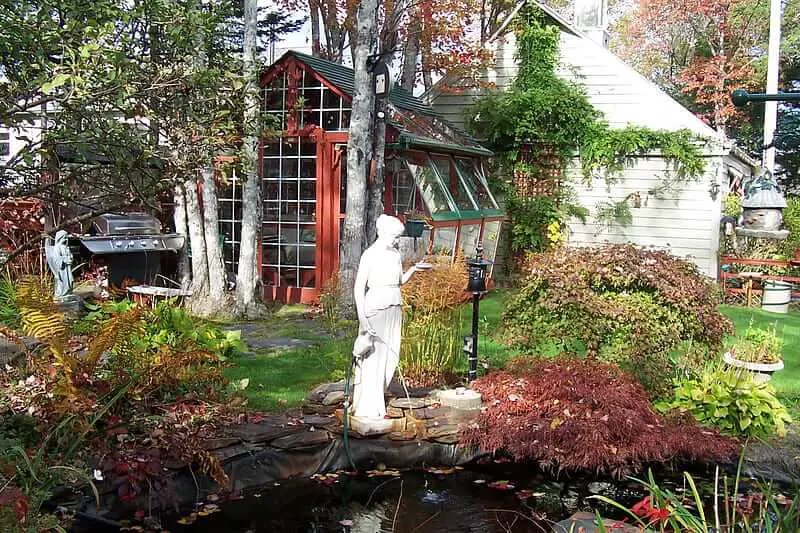
6. Increase the Volume With Shrubs
Although underrated, shrubs infuse much-needed ‘body’ to your garden borders. As an unwritten landscaping rule, shrubs should constitute around 40% of your border plants, spaced expertly from the furthest end to the front.
For perfect results, evergreens with shapely leaves should be your first pick, particularly if your garden is small. Always mind the shrub’s size when mature since some usually grow to enormous proportions.
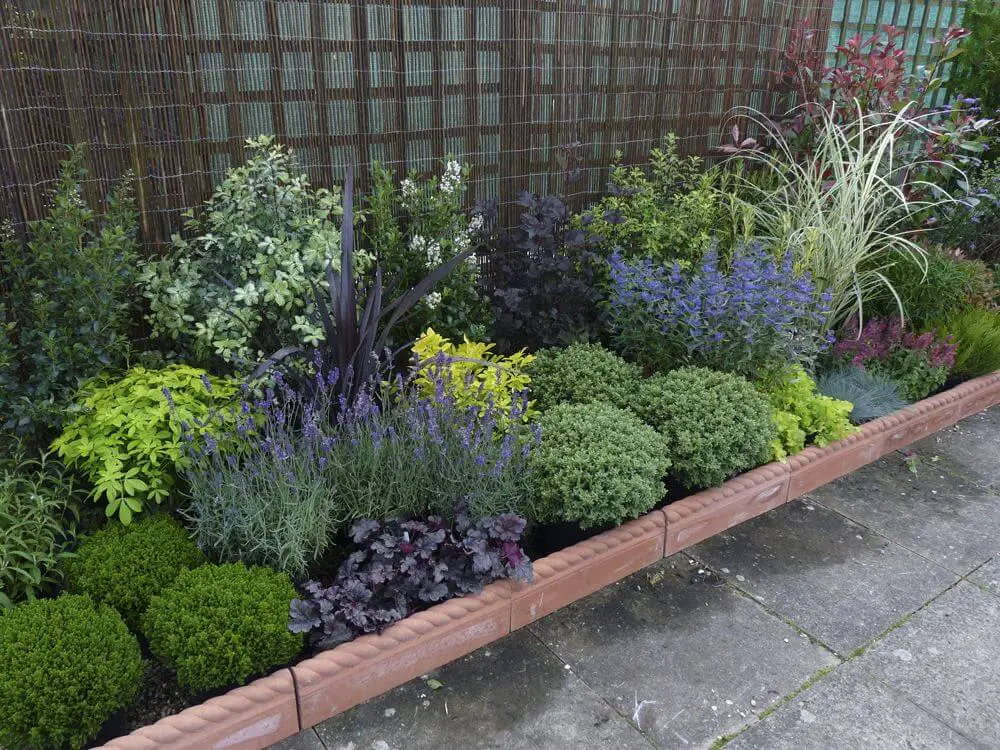
7. Add a Water Feature
A water feature is an impressively low-maintenance border idea, but that still doesn’t dim the fact that it adds a great impact to your garden.
Water features are usually part of your garden’s greater landscaping. However, with a little ingenuity, they can be used as borders along the edges of your garden.
Some water plants, such as soilless succulent plants, will do the trick to enhance the look.
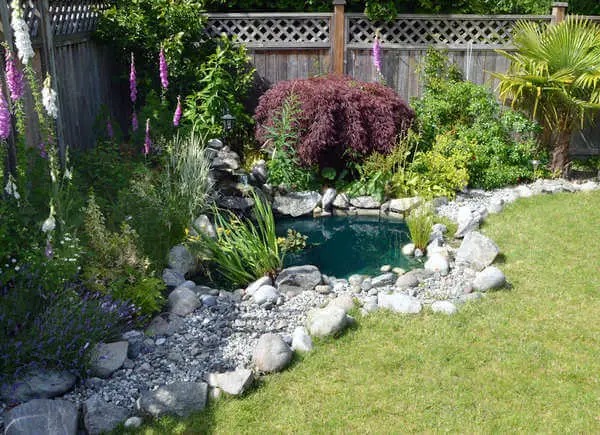
4 Reasons Why Plants Are Ideal as Garden Borders
- Plants give your garden a natural look that other edging options can’t hope to match.
- Plants are dynamic. They infuse lots of motion to the landscape and are bird and butterfly magnets.
- The plants ensure there’s year-round bloom and colors around your garden beds and paths.
- Also crucial is that plant borders soften the impact of hardscape features like pavers, arbors, and stepping stones.
Plants are the quintessential garden border options for DIY landscapers looking for low-maintenance garden ideas. However, the trick is to choose plants that don’t need an irrigation system, clipping, deadheading, staking, and fertilizing.
Settle for drought-tolerant plants that can fend for themselves and only require little or no attention.

